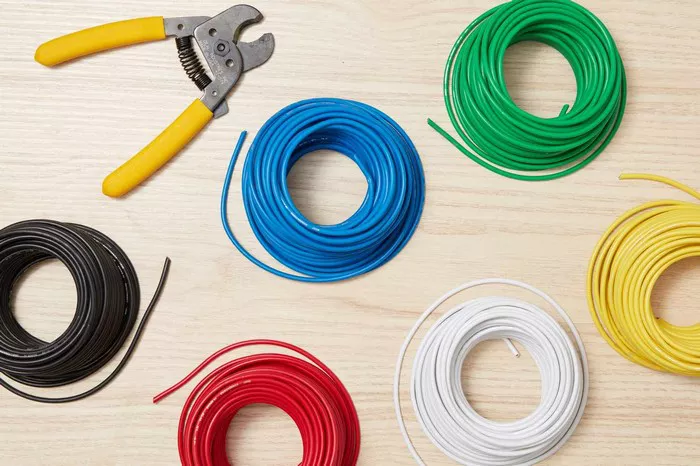Underground feeder (UF) cables play a crucial role in electrical distribution, particularly in residential, commercial, and industrial applications. These cables are designed to be buried directly underground, eliminating the need for conduit or additional protective casing. Their durability, insulation, and water-resistant properties make them ideal for safely transmitting electrical power in outdoor and underground environments.
This article provides a comprehensive understanding of underground feeder cables, their construction, working principles, installation methods, advantages, and common applications.
What Is Underground Feeder Cable?
An underground feeder (UF) cable is a type of electrical wiring specifically designed for direct burial applications. Unlike standard non-metallic sheathed (NM) cables, UF cables have robust insulation that can withstand moisture, soil contact, and harsh environmental conditions. These cables are commonly used for outdoor wiring projects, such as powering garden lights, pumps, outbuildings, and underground electrical systems.
Structure of an Underground Feeder Cable
A typical UF cable consists of the following components:
Conductors – The primary current-carrying elements, usually made of copper or aluminum. These conductors can be solid or stranded depending on the flexibility and application requirements.
Insulation – Each conductor is individually insulated with heat- and moisture-resistant material, typically polyvinyl chloride (PVC).
Outer Jacket – A thick PVC sheath encases the entire cable assembly, providing an additional layer of protection against mechanical damage, moisture, and environmental exposure.
Grounding Conductor – Many UF cables include a bare or insulated grounding wire to ensure safety and compliance with electrical codes.
Working Principles of Underground Feeder Cables
UF cables function as standard electrical conductors, transmitting power from one point to another while ensuring safety through insulation and grounding. The primary working principle involves:
Electrical Transmission – Conductors within the cable carry electrical current from the power source to the connected load, such as outdoor lighting or detached structures.
Insulation Protection – The insulation and outer sheath prevent electrical leakage, short circuits, and exposure to external elements like moisture and dirt.
Grounding Mechanism – The grounding conductor helps dissipate fault currents, preventing electrical hazards such as shocks and fires.
Direct Burial Capability – Unlike conventional wiring, UF cables can be laid directly in trenches without requiring conduits, provided they are buried at the appropriate depth according to electrical codes.
Installation of Underground Feeder Cables
Proper installation of UF cables is essential for ensuring safety, reliability, and longevity. Below are the key steps involved in the installation process:
1. Planning the Layout
- Identify the path for cable placement, ensuring it avoids obstacles such as tree roots, water lines, or other underground utilities.
- Check local building codes for regulations on burial depth and conduit requirements.
2. Trenching
- Dig a trench of the required depth (typically 12 to 24 inches, depending on local regulations and cable specifications).
- Ensure the trench is free from sharp objects that may damage the cable.
3. Laying the Cable
- Place the UF cable directly in the trench, ensuring minimal bends and avoiding kinks.
- For added protection, some installations may require laying the cable inside a conduit, especially in high-traffic areas.
4. Covering the Cable
- If required, lay a warning tape above the cable to alert future excavators.
- Fill the trench with soil, compacting it carefully to avoid damage.
5. Connecting to Power
- Ensure the cable is properly connected to the power source and the intended load.
- Use weatherproof junction boxes and electrical fittings for outdoor terminations.
6. Safety Testing
- Perform continuity and insulation resistance tests to confirm proper installation.
- Verify grounding and check for any potential electrical faults.
Advantages of Underground Feeder Cables
1. Durability and Longevity
UF cables are designed to withstand underground conditions, making them highly durable with a long service life.
2. Safety
Since these cables are buried, they are less likely to be damaged by weather, animals, or human activities, reducing electrical hazards.
3. Aesthetic Appeal
By eliminating the need for overhead wiring, UF cables contribute to a cleaner and more organized appearance in residential and commercial spaces.
4. Weather Resistance
UF cables are highly resistant to moisture and environmental conditions, ensuring consistent performance in wet or damp locations.
5. Cost-Effectiveness
Despite their robust construction, UF cables eliminate the need for additional conduit materials and protective casings, making them a cost-effective wiring solution.
Common Applications of Underground Feeder Cables
UF cables are used in various applications, including:
Outdoor Lighting – Supplying power to garden lights, security lights, and landscape lighting systems.
Detached Structures – Wiring for garages, sheds, barns, and other outdoor buildings.
Water Features and Pumps – Providing electricity to pond pumps, fountains, and irrigation systems.
Recreational Areas – Powering outdoor kitchens, gazebos, and pool equipment.
Agricultural Installations – Delivering electricity to farms, greenhouses, and livestock enclosures.
Temporary Outdoor Events – Setting up power supply lines for fairs, concerts, and outdoor gatherings.
Challenges and Considerations
While UF cables offer numerous benefits, they also come with some challenges:
1. Installation Complexity
Laying UF cables requires careful planning, trenching, and compliance with electrical codes.
2. Repair Difficulties
Since the cables are buried, locating and fixing faults can be more complicated and labor-intensive compared to overhead wiring.
3. Voltage Drop Concerns
Long-distance runs may experience voltage drops, requiring larger conductor sizes to maintain efficiency.
4. Soil Conditions
Certain soil types, such as rocky or highly acidic soil, may affect the longevity of the cable and necessitate additional protective measures.
Conclusion
Underground feeder cables provide a reliable, safe, and aesthetically pleasing solution for outdoor and underground electrical wiring needs. Their direct burial capability, resistance to environmental conditions, and cost-effectiveness make them a popular choice for homeowners, contractors, and engineers. However, proper installation and adherence to electrical codes are critical to ensuring their longevity and performance. Whether for residential, commercial, or industrial applications, UF cables remain an essential component of modern electrical infrastructure.

